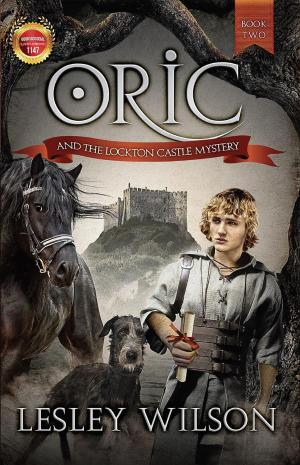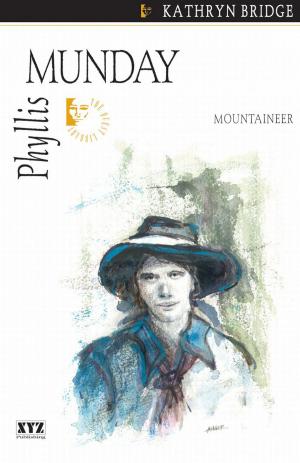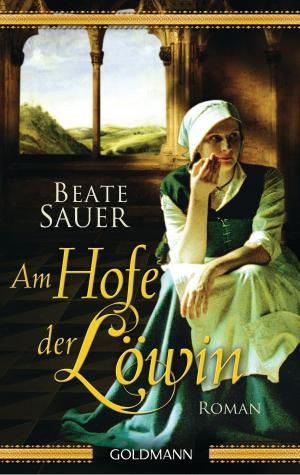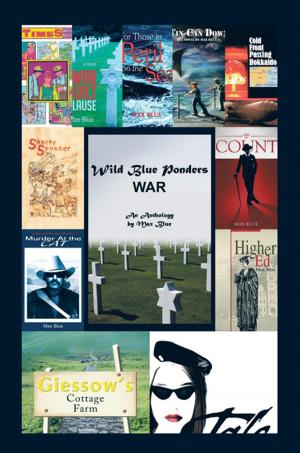| Author: | Stewart Nash | ISBN: | 9781301925407 |
| Publisher: | Stewart Nash | Publication: | January 24, 2013 |
| Imprint: | Smashwords Edition | Language: | English |
| Author: | Stewart Nash |
| ISBN: | 9781301925407 |
| Publisher: | Stewart Nash |
| Publication: | January 24, 2013 |
| Imprint: | Smashwords Edition |
| Language: | English |
A 1779 journey of discovery takes Spanish Captain Tristan Cárdenes, twenty-one soldiers, and eight horses to the west coast of Canada. Their charge: travel inland for forty days, determine numbers of indigenous peoples, their strengths, wealth, and claim the land for Spain. The ship encounters a bad storm and breaks apart on the rocks. Cárdenes makes shore by holding the tail of a horse while dragging his duffel with flintlock pistols, powder, balls, caps, saber, and his copper shield. He finds other survivors; Juan, Luis, Manrique, and two other horses. They struggle to find adequate shelter, food, and water. They discuss their options: travel homeward along the coast, cross the high mountains before them, or follow the large river east, and turn southward. They agree to go inland along the river.
When a hundred miles from the coast, they experience a mild earthquake accompanied by heavy rumbling sounds, not knowing that a native village thirty miles to the northwest is being inundated with a historical lava flow, the village of Lax Ksi Luux, later called Aiyansh.
A hundred miles inland the group finds a Gitkxsan village. Chief Hunting Owl warns them of the coming winter and invites them to stay until spring. The chief is amazed to see the copper shield Tristan pulls from his belongings. He tells Tristan it is a great Copper, and then retrieves his own, a similar item made from pure annealed copper, one that would never be used in battle. They discussed the different uses of the two, the chief’s being known only as a Copper, one with many strange uses and of great value.
The chief notices how Tristan looks at his Haida slave woman, Dancing Bird, whom no man will touch because of facial skin pigmentation. The chief later offers her to him in exchange for Tristan’s colourfully decorated cavalry jacket he wore when the ship wreck happened. Tristan accepts the offer, and frees her as a slave, but she doesn’t quite understand, and has no other place to go. She moves her sleeping mat next to his.
The travelers help with gathering of winter foods and they are trained in the use of native weapons for hunting. Tristan does not reveal his flintlock pistol. While Tristan and Juan are hunting caribou with several village men, Haida warriors attack the village at daybreak. Many villagers escape to a uniquely built fort a mile away where they defend themselves against the attackers. One Spaniard is beheaded, the other taken captive, as is twenty other young men and women. Upon the hunters return, Tristan argues that they should go after the captives, but is finally convinced they do not have enough men to fight. He is sickened from having his own man taken captive, and believes Dancing Bird was returned to her husband before being captured by the Gitkxsan. Days later, a young man hunting rabbits finds Tristan’s sabre and copper shield hidden in the woods, and he knows Dancing Bird did it, and was ever more certain she was captured, as her body was nowhere to be found.
The value of the copper shield and rare trade goods of furs, pelts, and food items are now thought to be adequate to free the captured villagers. But are they enough? The villagers best hunter and negotiator, Standing Bear, speaks some Haida dialect, so accompanies Tristan and his remaining ship mate. At the coast, Tristan finds out the Haida are on a large island, 20 league’s away and must trade for a thirty person canoe with paddlers. Tristan shows the value of the three horses that packed their trade items and the deal was made.
Once upon the island, Tristan spots the severed head of his slain shipmate who he had learned were killed by three Haida warriors. He’s infuriated and challenges all three to battle by taunts they cannot refuse. Tristan’s military experience with sabre and shield may be the deciding factor of their hopes of freeing those taken as slaves, and may somehow, lead to the way of returning his men home.
A 1779 journey of discovery takes Spanish Captain Tristan Cárdenes, twenty-one soldiers, and eight horses to the west coast of Canada. Their charge: travel inland for forty days, determine numbers of indigenous peoples, their strengths, wealth, and claim the land for Spain. The ship encounters a bad storm and breaks apart on the rocks. Cárdenes makes shore by holding the tail of a horse while dragging his duffel with flintlock pistols, powder, balls, caps, saber, and his copper shield. He finds other survivors; Juan, Luis, Manrique, and two other horses. They struggle to find adequate shelter, food, and water. They discuss their options: travel homeward along the coast, cross the high mountains before them, or follow the large river east, and turn southward. They agree to go inland along the river.
When a hundred miles from the coast, they experience a mild earthquake accompanied by heavy rumbling sounds, not knowing that a native village thirty miles to the northwest is being inundated with a historical lava flow, the village of Lax Ksi Luux, later called Aiyansh.
A hundred miles inland the group finds a Gitkxsan village. Chief Hunting Owl warns them of the coming winter and invites them to stay until spring. The chief is amazed to see the copper shield Tristan pulls from his belongings. He tells Tristan it is a great Copper, and then retrieves his own, a similar item made from pure annealed copper, one that would never be used in battle. They discussed the different uses of the two, the chief’s being known only as a Copper, one with many strange uses and of great value.
The chief notices how Tristan looks at his Haida slave woman, Dancing Bird, whom no man will touch because of facial skin pigmentation. The chief later offers her to him in exchange for Tristan’s colourfully decorated cavalry jacket he wore when the ship wreck happened. Tristan accepts the offer, and frees her as a slave, but she doesn’t quite understand, and has no other place to go. She moves her sleeping mat next to his.
The travelers help with gathering of winter foods and they are trained in the use of native weapons for hunting. Tristan does not reveal his flintlock pistol. While Tristan and Juan are hunting caribou with several village men, Haida warriors attack the village at daybreak. Many villagers escape to a uniquely built fort a mile away where they defend themselves against the attackers. One Spaniard is beheaded, the other taken captive, as is twenty other young men and women. Upon the hunters return, Tristan argues that they should go after the captives, but is finally convinced they do not have enough men to fight. He is sickened from having his own man taken captive, and believes Dancing Bird was returned to her husband before being captured by the Gitkxsan. Days later, a young man hunting rabbits finds Tristan’s sabre and copper shield hidden in the woods, and he knows Dancing Bird did it, and was ever more certain she was captured, as her body was nowhere to be found.
The value of the copper shield and rare trade goods of furs, pelts, and food items are now thought to be adequate to free the captured villagers. But are they enough? The villagers best hunter and negotiator, Standing Bear, speaks some Haida dialect, so accompanies Tristan and his remaining ship mate. At the coast, Tristan finds out the Haida are on a large island, 20 league’s away and must trade for a thirty person canoe with paddlers. Tristan shows the value of the three horses that packed their trade items and the deal was made.
Once upon the island, Tristan spots the severed head of his slain shipmate who he had learned were killed by three Haida warriors. He’s infuriated and challenges all three to battle by taunts they cannot refuse. Tristan’s military experience with sabre and shield may be the deciding factor of their hopes of freeing those taken as slaves, and may somehow, lead to the way of returning his men home.















